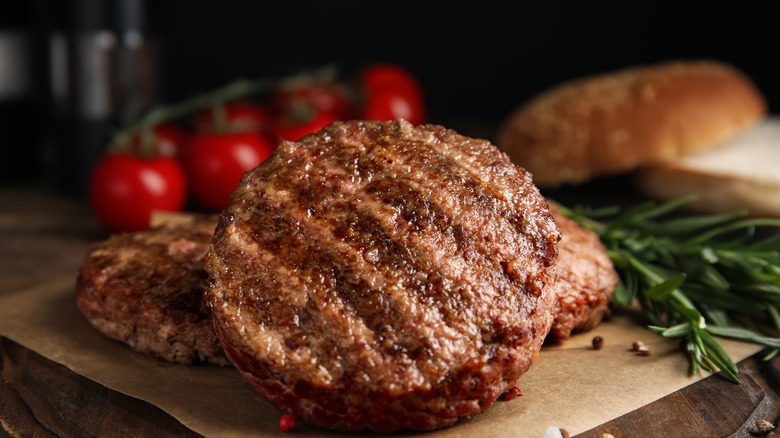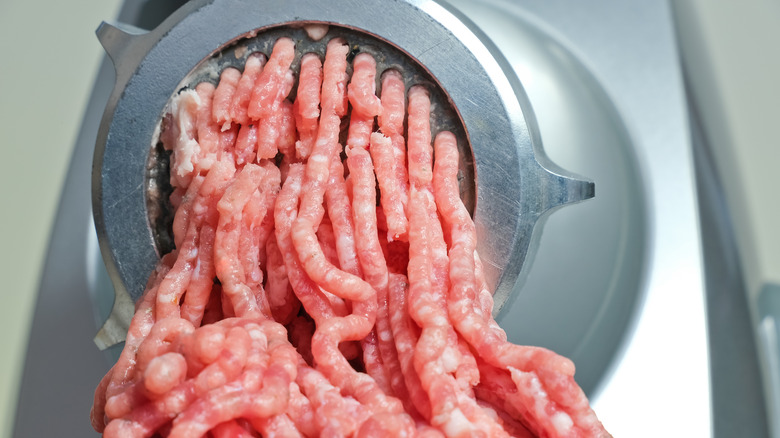The Chef-Approved Method For Creating The Perfect Burger Patty
Few things are more satisfying than a bite from an expertly constructed burger. When you chomp down on the ideal burger, the savory meld of toasted bread, condiments, and toppings cushions the juicy explosion of a well-seasoned piece of beef. Perhaps you've only had this experience at your favorite burger joint. However, with a few tips and tricks, home cooks can produce a similar product.
The path to such a bite begins with a well-crafted patty. Sure, rolling some ground beef into a ball and smashing it flat will make a serviceable burger, but if you want to elevate your game, you'll have to be more particular. In an episode of In Search of Perfection, Michelin-starred chef Heston Blumenthal takes a deep dive into the art of making hamburgers. For Blumenthal, perfection begins during the grinding process, when you must keep all ground strands running in the same direction. While a bit labor-intensive, this method creates a burger patty with the perfect texture.
Grinding and rolling your meat
The crux of Blumenthal's patty crafting method comes during the grinding process. As the meat leaves the grinder, it will be forced out in long strands. Instead of letting these fall into a pile, you'll need to guide the strands and lay them down on a sheet of plastic wrap, ensuring that they don't tangle. This is a two-person job that requires one person to run the grinder and another to cradle the ground meat.
This extra effort will result in a burger that holds firm on the plate but falls apart in your mouth. According to Blumenthal, the grinding process will "release proteins" that "act as a binding agent." If the strands become crossed or smashed, the meat fibers will bind together. This can result in a dense, chewy burger. Keeping each strand in alignment will prevent excessive binding, leading to a final patty that will form a satisfying crumble when bitten.
When the beef strands are all processed and aligned, roll the entire mixture into the shape of a log by gently enveloping it in the plastic wrap. The tube shape maintains the grain alignment and condenses the strands into a density that can later form a burger patty.
After refrigeration, use a sharp knife to slice the tube crosswise into patty-sized sections. When you look at a cross-section, you'll notice the ground strands running vertically in each burger. Those are the pieces that will fall apart when you take a bite.
The right beef mixture
Beyond the grinding technique, there's another essential stage to making a perfect burger: meat selection. Ground beef is typically made from scraps that have been trimmed from the cuts of meat sold that are placed in a store display. Meat from chuck, sirloin, and round cuts are often used for grinding.
Blumenthal amps up his burgers with a meat blend. Here, he formed a mixture of 50% chuck, 25% short rib, and 25% brisket. He notes that the brisket contributes a "buttery-type fat to the mixture" while the short rib adds a "wonderful, nutty flavor" to the burger. In the chuck cut, he utilized meat that had been seam butchered, a technique where the cut is made along the connective tissue of the animal. Because this method removes much of this tough tissue between muscle groups, seam-cut meats lose some of the chewiness associated with tougher cuts of meat and help form super tender burgers.


